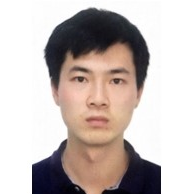Recent Advances in Optical Remote Sensing of Atmosphere
A special issue of Atmosphere (ISSN 2073-4433). This special issue belongs to the section "Atmospheric Techniques, Instruments, and Modeling".
Deadline for manuscript submissions: closed (27 February 2023) | Viewed by 6395
Special Issue Editors
Interests: satellite remote sensing; air pollutants; atmospheric optics; emission inversion
Special Issues, Collections and Topics in MDPI journals
Interests: ground-based remote sensing; air pollution; aerosol; trace gases; pollution transport
Interests: ground-based stereoscopic remote sensing; hyperspectral instruments; atmospheric chemistry and physics; air pollutants; greenhouse gases
Special Issues, Collections and Topics in MDPI journals
Special Issue Information
Dear Colleagues,
Measuring atmospheric parameters is an important prerequisite for human understanding of the laws of the Earth's atmosphere. In recent decades, atmospheric measurement technology has developed rapidly due to the major needs of human exploration of space, urban air pollution and global climate change. Optical remote sensing technology, with its characteristics of long-range and non-contact measurements, plays an important role in atmospheric monitoring. Especially, the spaceborne optical instrument provide a unique perspective on the Earth atmosphere.
Here, we initiate a special issue entitled “Recent Advances in Optical Remote Sensing of Atmosphere”, mainly covering but not limited to the optical measurement technique and its application of the physical properties and abundances of atmospheric pollutant gases, greenhouse gases, clouds and aerosols, etc. More specifically, it will address topics included in the following list of remote sensing techniques/algorithms and its applications:
- Instrumentation: principle and design of prototype measurement instrument;
- Algorithm: development on the atmospheric forward and inversion model;
- Experiments: field campaign of multi-platform atmospheric sensors;
- Analysis: spatiotemporal trends, mechanisms of air pollution or atmospheric process
Dr. Chengxin Zhang
Dr. Qianqian Hong
Dr. Chengzhi Xing
Guest Editors
Manuscript Submission Information
Manuscripts should be submitted online at www.mdpi.com by registering and logging in to this website. Once you are registered, click here to go to the submission form. Manuscripts can be submitted until the deadline. All submissions that pass pre-check are peer-reviewed. Accepted papers will be published continuously in the journal (as soon as accepted) and will be listed together on the special issue website. Research articles, review articles as well as short communications are invited. For planned papers, a title and short abstract (about 100 words) can be sent to the Editorial Office for announcement on this website.
Submitted manuscripts should not have been published previously, nor be under consideration for publication elsewhere (except conference proceedings papers). All manuscripts are thoroughly refereed through a single-blind peer-review process. A guide for authors and other relevant information for submission of manuscripts is available on the Instructions for Authors page. Atmosphere is an international peer-reviewed open access monthly journal published by MDPI.
Please visit the Instructions for Authors page before submitting a manuscript. The Article Processing Charge (APC) for publication in this open access journal is 2400 CHF (Swiss Francs). Submitted papers should be well formatted and use good English. Authors may use MDPI's English editing service prior to publication or during author revisions.
Keywords
- atmospheric measurement
- remote sensing
- spectroscopy
- satellite instruments
- atmospheric trace gases







